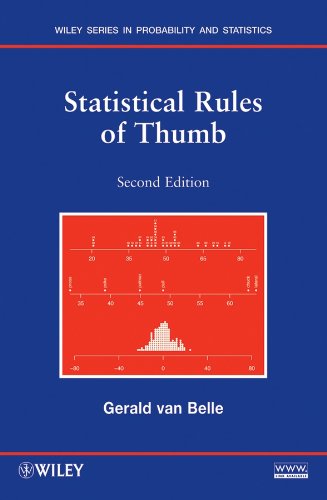Statistical rules of thumb book download
Par randall thomas le mercredi, septembre 21 2016, 04:28 - Lien permanent
Statistical rules of thumb. Gerald van Belle

Statistical.rules.of.thumb.pdf
ISBN: 0470144483,9780470144480 | 305 pages | 8 Mb

Statistical rules of thumb Gerald van Belle
Publisher: Wiley
The P-Value: What it Really Means. As a rule of thumb, this means that your sample size multiplied by your proportion estimate is greater than ten, and that your sample size multiplied by the opposite of your proportion estimate is also greater than ten. An Unstable Okun's Law, Not the Best Rule of Thumb Brent Meyer and Murat Tasci 06.07.12 Okun's law is a statistical relationship. The P-value is one of the biggest sources of confusion in statistics, and it's not uncommon for researchers to use the wrong definition: not when they compute it, but when they think about it. Hourly rates and units per hour are based on field experience and industry rules of thumb. You'll need to be able to compute probabilities of Type I and II errors, obviously What most people call statistical discrimination is just the application of rules of thumb, based on little or no data. They also claim that statistics based systems are more accurate. But that's a complement to judgment. Companies advocating the statistics system hold that editorially maintained rule bases take a lot of up-front investment and higher costs overall. On the other hand, statistics based systems require a then the cost of thesaurus creation needs to be added. For independent means, error bars representing 95% confidence intervals can overlap and still be statistically significant at the 5% level. That's not a substitute for judgment. So statistics can play a very useful role in testing these rules of thumb, and sometimes things which you think are working are not actually working.